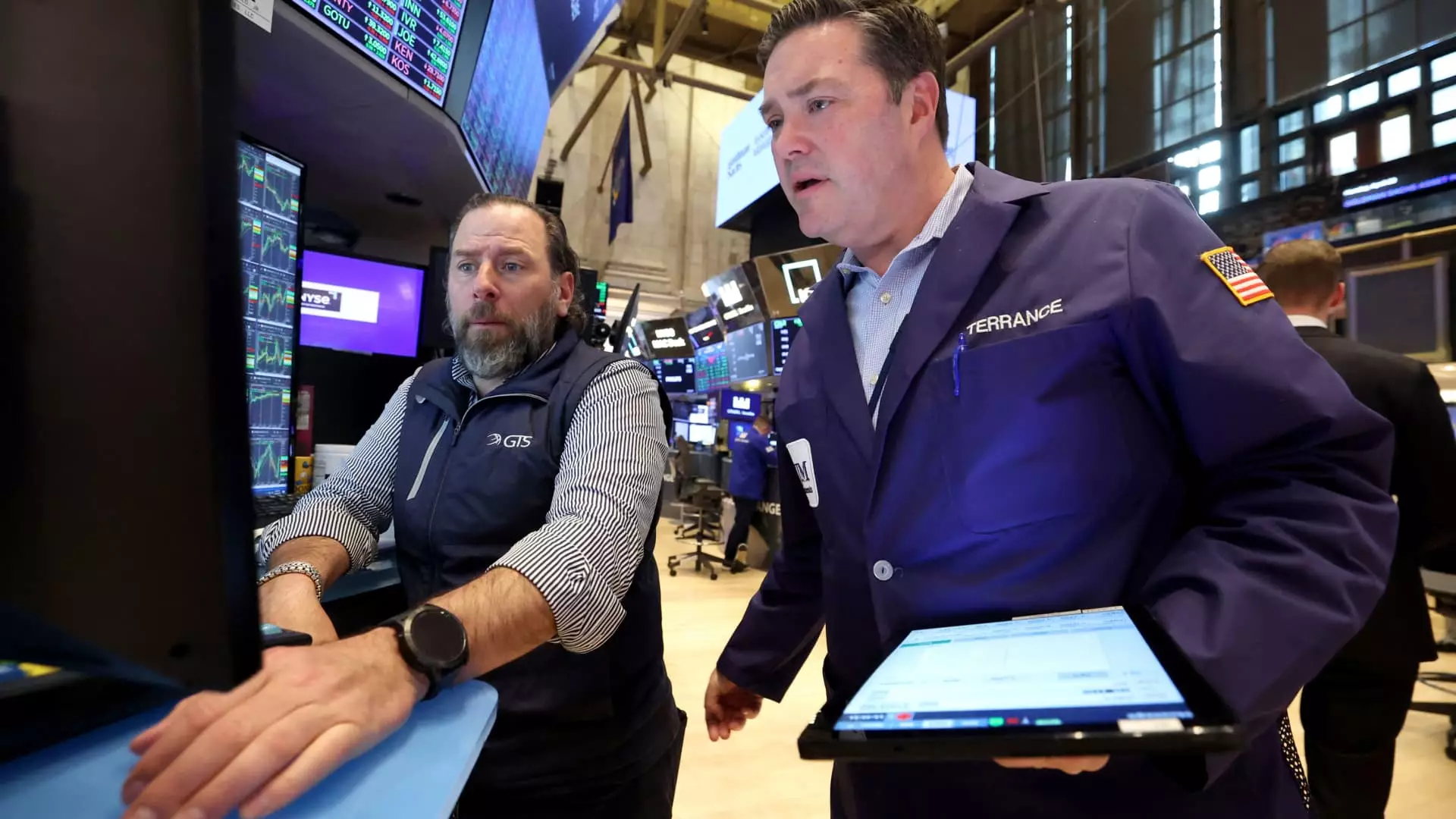In a climate of uncertainty that has plagued investors since the April 2 tariff announcement, the S&P 500 and Nasdaq Composite have surprisingly clawed back their lost ground. However, this resurgence is deceptive; it rests on the precipice of larger, looming economic decisions that could radically alter its trajectory. As we inch closer to the Federal Reserve’s impending announcement, the market is gripped with anxiety, leading many to question the sustainability of this recovered momentum. Bewilderingly, Wall Street seems to be caught in a cycle of blind optimism, disregarding fundamental concerns in favor of the hope that forward guidance will mask potential pitfalls.
The CME Group’s FedWatch tool is a peculiar comfort for many, suggesting a staggering 95% likelihood that rates will be held steady within the current 4.25%-4.5% range. Yet, this very confidence could be the death knell for regulatory predictability. If Chair Jerome Powell’s remarks hint at a lack of economic windfall, stocks could take a drastic dip. As Craig Johnson of Piper Sandler warns, the S&P 500’s flirtation with a resistance level at 5,800 might be a dangerous game, setting the stage for a swift correction back toward the 5,400 to 5,500 territory.
Defensive Strategies: A Rational Approach in Turbulent Times
With tariff uncertainties and an unpredictable Fed weighing heavily on investor psyche, it’s only logical for strategists to adopt a more defensive posture. Steve Sosnick, chief strategist at Interactive Brokers, echoes a sentiment that warrants serious consideration: Is the Fed prepared to maneuver while the 90-day tariff moratorium hovers like a dark cloud overhead? The lack of conclusive economic data amplifies the urgency of restraint. In stark contrast to the euphoria that often surrounds bull markets, this environment calls for sober deliberation over reckless exuberance.
Keith Lerner of Truist champions a diversified portfolio favoring utilities, financials, and communication services. It is crucial to recognize that while a potential economic slowdown looms, the heft of big tech—especially in the AI realm—offers a modest sense of security. With utilities leading the pack as the best-performing sector this year, it appears that conservative, stable investments might be the wisest navigation through turbulent economic waters.
The AI Boom: A Double-Edged Sword
While many view tech and AI-directed stocks as stalwart safe havens going into the Fed meeting, one must question the validity of this perspective. Adam Patti, CEO of VistaShares, underscores the notion that the AI sector will rebound. “The AI trade is going to come back with a vengeance,” he confidently proclaims. Yet, in a landscape characterized by volatility and overreaction, such proclamations must be tempered with caution. Is there an inherent risk in placing excessive faith in the cyclical behavior of AI stocks?
The reality is that the foundational issues driving market dynamics remain unresolved. Just because AI funding appears resilient doesn’t shield investors from the broader economic storms at hand. Stocks might not be as insulated as we hope, and valuing tech from a defensive angle might overlook the need for a more nuanced strategy that encompasses potential volatility.
Emerging Opportunities: Bonds and Beyond
In this climate, Malcolm Ethridge of Capital Area Group offers a refreshing perspective on short-term bonds—an avenue counter to the prevailing obsession with tech. Locking in current rates may be advantageous, indicating a unique opportunity unbound by speculation. With the allure of a 2-year Treasury note at 3.797%, prudent investors should consider these fixed-income alternatives more heavily in their arsenal. Rather than gambling on unpredictable market swings, the ground of stable, assured returns is indeed a more compelling narrative in this uncertain world.
As market participants navigate this maze of speculation and economic data, they must remember that opportunity can often lie in the most unsuspecting commodities. The decision-making process doesn’t have to be a binary choice between risk and reward; instead, a carefully crafted blend of defensive and strategic investments can yield far more reliable outcomes in these unpredictable times.

